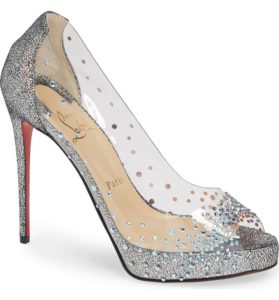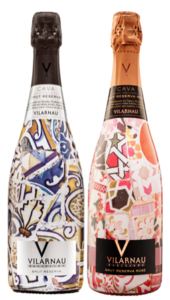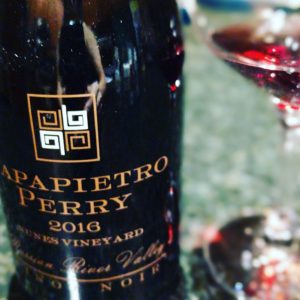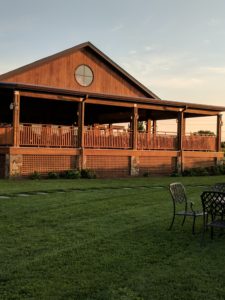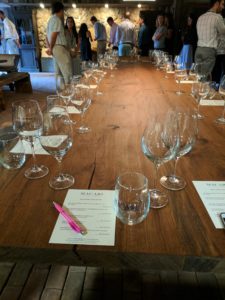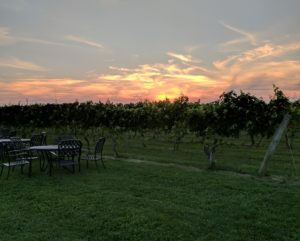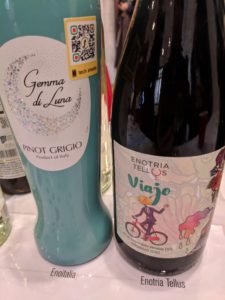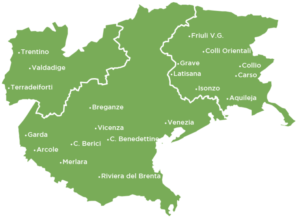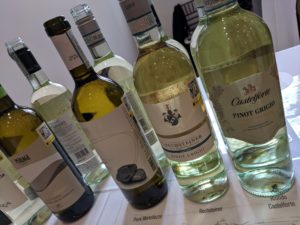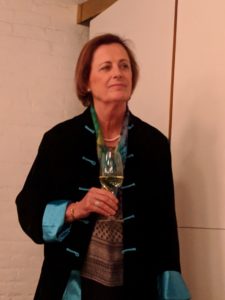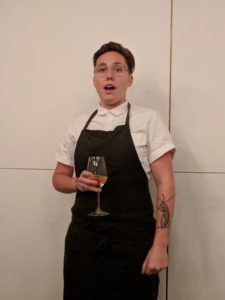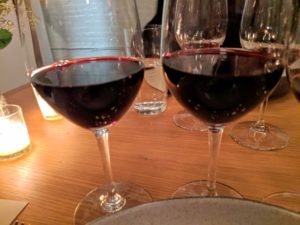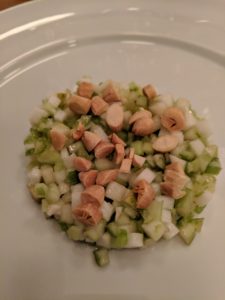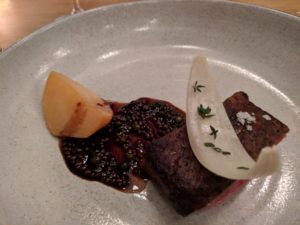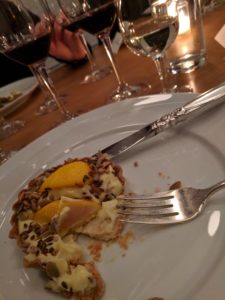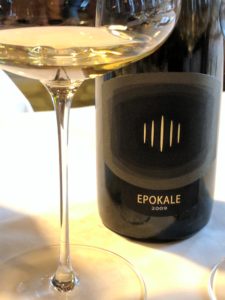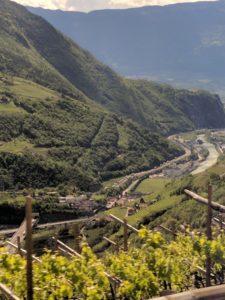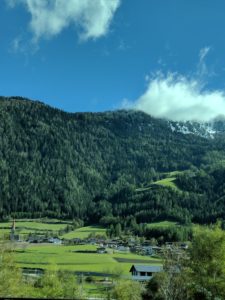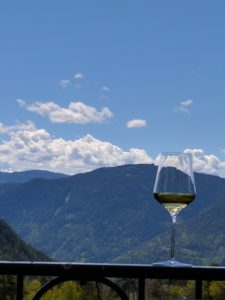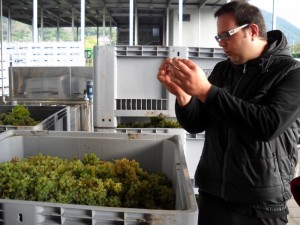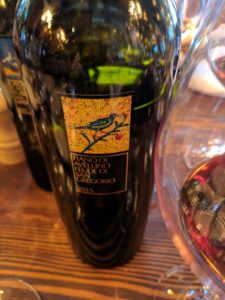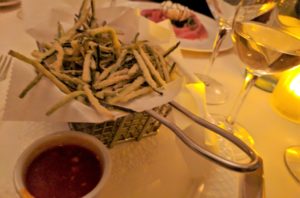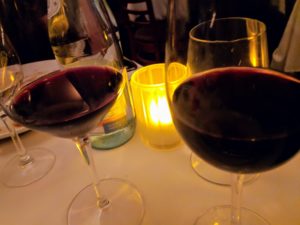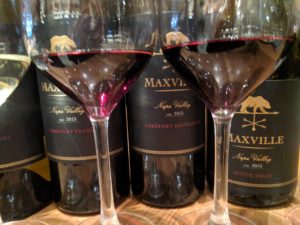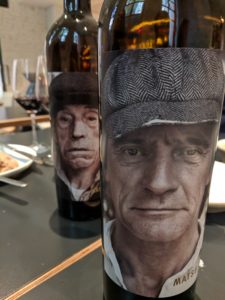 Ricardo Arambarri is a man on a mission: scouring Spain for great grapes and sharing them with the world. Fortunately, he seems to have the energy and stamina to do so. In fact, he admitted that his energy is often too much for his girlfriend, so she is thankful that he “lives on the plane,” she can catch up on sleep while he is traveling.
Ricardo Arambarri is a man on a mission: scouring Spain for great grapes and sharing them with the world. Fortunately, he seems to have the energy and stamina to do so. In fact, he admitted that his energy is often too much for his girlfriend, so she is thankful that he “lives on the plane,” she can catch up on sleep while he is traveling.
Energy aside, despite being born and raised in the heart of the Rioja wine region, Ricardo’s vinous destiny was not assured. Yes, his family had been tending to their own vineyards in the region for generations, but, Ricardo’s dad, José Miguel Arambarri, detested working in the field and left Logroño in order to pursue a more satisfying career. However, in the late 1990s, José Miguel decided to invest in the family business and returned home to reinvigorate the vineyards.
As a young man, Ricardo, too, was anxious to leave his small town and see the world, studying first in Barcelona and then settling in Texas after graduation. His plan was to eventually move to New York, but as they say, the best laid plans… Unfortunately, José Miguel suffered a stroke (he has since fully recovered), forcing Ricardo to head back to Spain.
But, the upside of that tragedy was that he was inspired to create a company focused on making quality wine in Spain. Now, ten years on, Vintae produces wines in 15 different regions, expanding the portfolio as they explore up-and-coming areas. The company’s overarching philosophy is to show the diversity of Spain, while providing wines that are accessible to consumers, easy to enjoy and drinkable upon release.
With an MBA under his belt, Ricardo serves as CEO and is responsible for the business-side of Vintae’s operations, while his business partner serves as Technical Director, overseeing decisions in the vineyards. As the company continues to collaborate with its various growers, they are particularly driven by a goal of becoming 100% organic in the near future.
Beyond this specific goal, Ricardo and, by extension, Vintae, is firmly focused on the future of Spain and its wines, looking for opportunities to capitalize on its improved quality. In particular, he sees an upsurge in the prestige with Spanish whites, especially those from the Atlantic coastal areas such as Galicia. Consequently, Vintae launched its Atlantis range in 2015, which features whites from these regions. Its Albarino from Rias Baixas is sourced fruit from the sunnier (hence warmer and drier) sub-region of Condado de Tea. The range also includes a Hondarrabi Zuri from Txakoli, Godello from Valdoeras and Treixadura from Ribeiro.
Given the Arambarri’s Rioja heritage, it is not surprising that Rioja figures prominently in the company’s portfolio, with Hacienda Lopez de Haro added as early as 2003. Ricardo refers to these wines as being of the “contemporary classic style,” marrying the classic style of long aging in American oak, with the more fruit forward styles of the 1990s. He further notes that theirs has finesse, elegance and a good balance between fruit and oak, with a preference for aging the wines in used barrels.
Another lesser-known region where Vintae has been particularly active is Toro. This region is situated in Castilla y Leon and is known for its powerful wines produced from the Tempranillo grape, here called Tinta de Toro. Yet, in keeping with Vintae’s vinous aesthetic, they seek to craft wines that are more approachable than traditional Toro. To do so, they harvest early, shorten maceration times and ferment in concrete tanks, resulting in Toro wines that have been accused of being “too Rioja!”
But, if their production of Toro wines is less than conventional, their appreciation for the terroir, its preponderance of pre-phylloxera vines and its hardworking people is no less intense. In homage to the men and women who toil in Toro – which is known for having nine months of winter and three months of hell – their Matsu range (from the Japanese word for “wait”) fondly features photos of local grape growers on its labels.
Not content to conquer Spain, Vintae has also turned its attention to Chile, launching its Kudaw range also in 2015. But, it is clear that Ricardo continues to set his sights on new and novel areas of Spain, so it is likely that Vintae’s Spanish portfolio will grow further in time, fueled by his incessant energy and lots of time on a plane.
TASTING NOTES
Atlantis Albarino 2017, Rias Baixas, Spain, $14.99
This wines displays lovely minerality and a slightly marine character, along with fresh citrus, ripe apple, an unctuous texture and long length.
Bodega Classica Lopez de Haro Reserva 2013, Rioja, Spain, $17.99
Ricardo explained that 2013 was a cold vintage, resulting in lighter style wines, which I found to be a really elegant expression in the glass with aromas and flavors of spice, oak, and strawberry on the dry, medium-bodied palate.
Bodega Classica Lopez de Haro Gran Reserva 2009, Rioja, Spain, $28.99
Hailing from a warmer vintage and the recipient of longer oak aging, this wine offered up darker red fruit, more overt oak, fuller body and a more structured palate.
Matsu El Recio 2016, Toro, Spain, $24.99
Produced from 90- to 100-year old vines, this wine spent 14 months in used French oak barrels. Aromas of spice, black fruit and floral persisted on the palate, with long length.
Matsu El Viego 2015, Toro, Spain, $59.99
This wine is made from a selection of the best grapes from 100+-year-old vineyards. Powerful and intense with black fruit, spice, firm tannins, fresh acidity and full body, culminating in long length.


